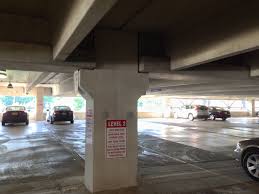Parking garages offer a convenient and secure place to leave your car while you’re away from home. These facilities stand out as a smart choice for drivers, as their designs have gotten better over time. Here is more information on the evolution of parking garage layouts:
Initial Parking Configurations
The first parking garages were built as more automobiles became accessible to the general public. Many engineers who built garages opted for a vertical framework to park as many vehicles as possible. Another feature was the inclusion of attendants who often parked the vehicles on behalf of the owners. Since numerous garages had tight spacing and required substantial expertise, attendants helped drivers park in many of these garages. Attendees would also use elevators to move the vehicles between different levels.
The focus with initial garages was creating a functional building that only parked vehicles. The buildings frequently lacked visual appeal and user-friendly features like bright lighting. Garages had manual processes to handle ticketing and parking lot payment.
Ramps in Garage Construction
The increased demand for accessible parking spaces required engineers to find solutions for making parking easier. Ramps changed the way construction companies created parking garages. These ramps enabled stacking parking spaces vertically to fit more vehicles within the same footprint. Drivers would use these ramps to pass through several levels instead of elevators, which allowed vehicles to ascend and descend floors without interrupting each other. Some of the adopted ramp designs include continuous spiral ramps, helix designs, and split-level systems. This eliminated the need for attendants since the drivers not conversant with vehicle elevators and tight parking required little support.
Standardization of Garage Layout
Many cities began passing regulations on how engineers designed and constructed garages. Regulating bodies mandated that garages pass strict structural integrity tests. This was needed since the buildings had to support the shifting weight of numerous parked and driven vehicles.
Another aspect of standardization was the dimensions of the garage. As vehicle manufacturing advanced and larger vehicles like SUVs and trucks were made, garages needed to be built larger to accommodate them. Garages had to have specific dimensions based on the type of vehicles they allowed to park. Smaller dimensions could accommodate small vehicles, while garages meant for trucks needed wider ramps, higher lift gates, and more sturdy support beams.
Safety and Aesthetics
Modern architects use designs that take advantage of natural light and sustainable materials like precast parts. Developers sometimes cover facades with live green walls, metal panels, or glass to make the interior more decorative. Layouts often have color-coded zones and simple navigation signage to reduce motorist confusion. Most contemporary garages have safety measures like bright lighting systems, clear viewlines with mirrors for better visibility, and camera systems to reduce blind spots. Safety features like fire-resistant materials and smoke ventilation systems became commonplace.
Multi-Use Designs
Older garages had a standalone design that served the primary purpose of housing vehicles. This creates a less convenient way to use the limited land available in cities and other metropolitan areas. New emerging parking layouts serve as part of the foundation or lower levels for other buildings. This lets the property owners serve the offices and other residents with parking as they use the premises.
Another way that garage layouts maximize space is to extend the garage from an existing building. This layout better serves shopping malls that have adequate space to expand horizontally rather than vertically. Such designs benefit malls that may have height restrictions.
Technological Advancements
Many garage companies collaborate with parking management services to make parking easier. The collaboration includes creating online websites and mobile applications to let drivers reserve passes, which simplifies the parking process. Some garages install easy-to-see signage, plate readers, and online payment systems for efficient parking management.
Book Spaces in Parking Garages Today
The evolution of parking garage layouts has made parking more convenient and accessible to drivers. This evolution continues to meet emerging trends like electric and driverless vehicles. Consult a parking garage management company on how to select a space based on location, your car type, and your preferred package.

